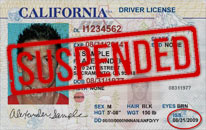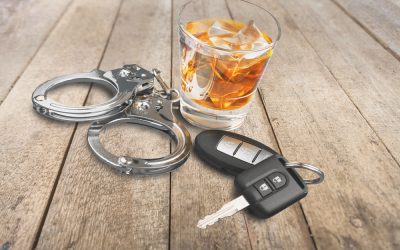California Health and Safety Code Section 11357 outlines the rules for marijuana possession in the state. It sets the legal limits for how much cannabis a person can carry and explains what happens if someone goes over those limits or breaks the law in other ways, such as using marijuana in public or possessing it on school grounds.
Even though marijuana is legal in California, there are still important rules to follow. Possessing too much marijuana, using it in the wrong places, or being underage can lead to fines, community service, mandatory drug education, or even criminal charges in some cases. An experienced lawyer can explain how California Health and Safety Codes apply to your case.
What Is Health and Safety Code §11357 HSC?
California Health and Safety Code §11357 is the law that explains what is legal and illegal when it comes to possessing marijuana in the state. It applies to both recreational and medical use and lays out the rules for how much cannabis a person can have, who can legally possess it, and where it can be used.
After Prop 64, California became one of the first states to fully legalize marijuana for adult use. While the new law relaxed many restrictions, §11357 HSC remains in place to set clear boundaries and prevent misuse.
Legal Limits for Marijuana Possession
In California, adults 21 and older are legally allowed to possess marijuana for personal use, but there are clear limits on how much and where it can be kept or used.
Under this law, it is legal for adults 21 and older to have:
- Up to 28.5 grams (about one ounce) of marijuana plant material
- Up to 8 grams of concentrated cannabis (like oils or wax)
Having more than these amounts is against the law and can lead to fines or other penalties.
However, possession becomes illegal if:
- A person is under 21
- The amount is over the legal limit
- Marijuana is found on school grounds, in certain public places, or on federal property
- It is carried in a vehicle in an open container
At Home vs. In a Vehicle
At home, you can safely store and use marijuana as long as you’re following the legal limits. Always treat marijuana possession in a car the same way you would treat an open container of alcohol; keep it sealed and out of reach.
In a vehicle, the rules are stricter, based on Vehicle Code § 23222 CVC:
- Marijuana must be sealed in a container or stored in the trunk
- It is illegal to use marijuana while driving or to have an open container in the car
- Having marijuana accessible while driving can result in a traffic citation or fine
Possession by Minors or Individuals Under 21
California has a zero-tolerance policy when it comes to marijuana possession by anyone under the age of 21. Even though marijuana is legal for adults, it is still illegal for minors and young adults under 21 to possess, use, or buy it.
What Happens If You’re Under 21 and Caught With Marijuana?
If you’re under 18, possession is considered an infraction, not a crime. Penalties include:
- Mandatory drug education or counseling
- Community service
If you’re 18 to 20 years old, you can be fined up to $100 for having small amounts. For larger quantities or other violations, the penalties can increase. Even though these are not jail-level offenses, they still matter.
Enhanced Penalties for Specific Circumstances
While marijuana possession is legal in California under certain conditions, there are situations where the penalties become more serious. These include having the intent to sell, being in a restricted area, or having a history of drug offenses.
Possession With Intent to Distribute
Health and Safety Code §11357 covers simple possession for personal use. However, if law enforcement believes you have the intent to sell, you could be charged under §11359, which is much more serious.
You may be suspected of intent to distribute if you:
- Have large amounts of marijuana
- Carry scales, packaging materials, or large amounts of cash
- Are seen exchanging marijuana for money
Possession with intent to sell is usually a misdemeanor, but it can become a felony in cases involving minors, prior convictions, or large-scale operations.
Possession in Restricted Areas
Even if you are within the legal possession limits, certain places are off-limits for marijuana:
- Federal property (like national parks or federal buildings)
- Near schools, daycares, or youth centers while children are present
- Jails or correctional facilities
Possessing marijuana in these areas can lead to higher fines, arrests, or felony charges, especially on federal land where state laws do not apply.
Prior Offenses and Their Impact
If you have a prior drug conviction, penalties for new marijuana charges can increase. This might mean:
- Facing a felony instead of a misdemeanor
- Longer probation periods
- Stricter sentencing if you’re arrested again
California’s laws allow for some flexibility, especially after Prop 64, but the courts will still consider your past record when deciding your punishment.
Expungement and Record Clearance
Proposition 64 didn’t just legalize marijuana; it also gave people a second chance. If you have a past marijuana conviction for something that is now legal or considered a lower offense, you may be able to clean your record. This can make a big difference when applying for jobs, housing, or school.
Under Prop 64, people with certain marijuana-related convictions can ask the court to:
- Dismiss the conviction entirely if the act is now legal (like possessing a small amount)
- Reduce a felony to a misdemeanor
- Seal old records, so they don’t show up in background checks
A Lawyer Can Explain How CA Health and Safety Code Section 11357 HSC Impacts Your Case
If you’re facing charges under California Health and Safety Code Section 11357 HSC for marijuana possession, especially if it’s related to a traffic stop or suspected drugged driving, a DUI lawyer can help.
At Los Angeles DUI Lawyer, we will connect you with experienced legal professionals who will explain everything you need to know about your case so you can make informed decisions.







